Cultural Insights and Natural Wonders: Discovering the Lhasa River Region
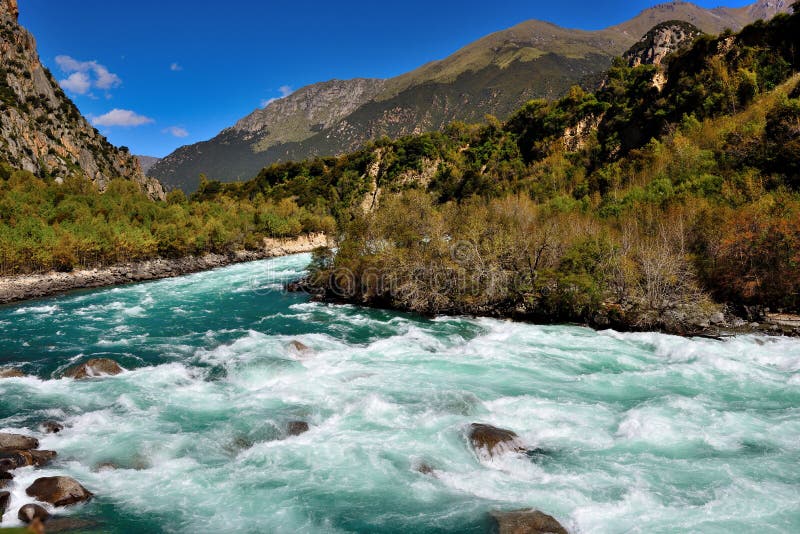
An Essential Guide to Visiting Lhasa River
Nestled in the heart of Tibet, the Lhasa River flows gracefully through the capital city, weaving a path that is as rich in culture and history as the land itself. This tranquil waterway, often referred to as the lifeblood of Lhasa, offers a unique perspective on the spiritual and daily life of the Tibetan people. As it meanders past ancient monasteries, bustling markets, and the iconic Potala Palace, the Lhasa River invites travelers to explore the enchanting landscapes that surround it.
Whether you’re seeking a serene escape from the vibrant city streets or an adventurous journey along its banks, the Lhasa River provides a stunning backdrop for unforgettable experiences. From leisurely strolls along its shores to engaging with local fishermen and pilgrims, every moment spent near this sacred river is a chance to connect with the heart and soul of Tibet. As you embark on your journey, prepare to be captivated by the breathtaking views, rich cultural tapestry, and the warm hospitality of the Tibetan people that the Lhasa River so beautifully embodies.
In This Guide
- An Essential Guide to Visiting Lhasa River
- The Rich History and Legends of Lhasa River
- Main Highlights: What You Absolutely Can’t Miss
- Planning Your Visit: A Practical Guide
- Tickets: Prices, Booking, and Tips
- How to Get There: A Complete Transportation Guide
- Local Cuisine and Accommodation Nearby
- Frequently Asked Questions
- Final Thoughts on Your Trip
The Rich History and Legends of Lhasa River
The Lhasa River, known as 拉萨河 in Mandarin, is not only a vital waterway but also a tapestry woven with the rich history and legends of Lhasa and its surrounding region. Originating in the majestic peaks of the Tibetan Plateau, this river flows gracefully through the capital of Tibet, Lhasa, before merging with the much larger Yarlung Tsangpo, or Brahmaputra River, further downstream.
Historically, the Lhasa River has been a lifeline for the inhabitants of this rugged terrain. It has provided water for agriculture, sustenance for livestock, and a means of transportation for goods and people. The river’s banks have been home to various settlements for centuries, with the city of Lhasa emerging as a spiritual and cultural epicenter. The river has witnessed the rise and fall of dynasties, the spread of Buddhism, and the intertwining of various cultures, making it a silent witness to a myriad of historical events.
The legends surrounding the Lhasa River are as captivating as its waters. One of the most enduring tales speaks of how the river was formed. According to local mythology, the Lhasa River was created from the tears of a celestial goddess who wept for the plight of the Tibetan people. Her tears fell to the earth, carving the river’s path through the landscape, and giving life to the land that it nourishes. This story underscores the deep spiritual significance attributed to the river by the Tibetan people, who often view it as a sacred entity that embodies the compassion and resilience of their culture.
Moreover, the Lhasa River is intrinsically linked to the Tibetan Buddhist faith. Pilgrims often make their way to the river’s shores, where they perform rituals, prostrations, and offerings, seeking blessings and purification. The river serves as a natural altar, where the convergence of nature and spirituality manifests beautifully. Its waters are believed to carry the prayers of those who come to its banks, further enriching the spiritual atmosphere of Lhasa.
As you explore Lhasa, take a moment to reflect on the significance of the Lhasa River. Its serene flow is a reminder of the enduring connection between the land, its people, and their shared history. Whether you find yourself standing on its banks or gazing at it from a distance, the river invites you to delve deeper into the stories it holds, enriching your journey through Tibet’s enchanting capital.
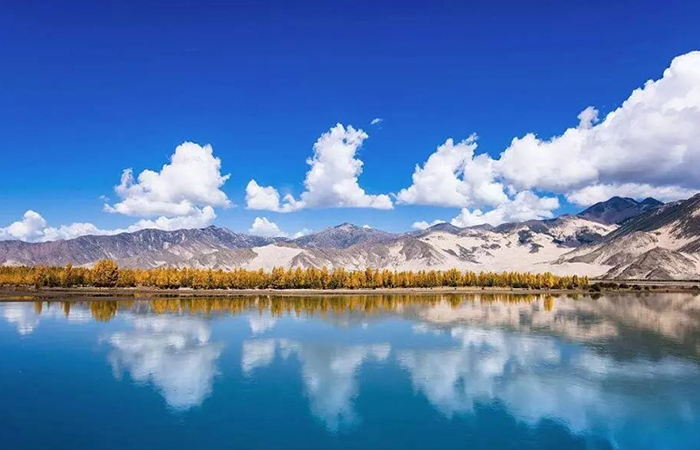
Lhasa River.
Main Highlights: What You Absolutely Can’t Miss
Lhasa, the vibrant capital of Tibet, is not only known for its rich spiritual heritage and breathtaking landscapes but also for the captivating Lhasa River that meanders through this enchanting city. Here are the must-see highlights that you absolutely cannot miss during your visit to the Lhasa River area:
Stroll Along the Lhasa Riverbanks
One of the simplest yet most rewarding experiences is a leisurely walk along the banks of the Lhasa River. The riverside promenade offers stunning views of the surrounding mountains and the iconic Potala Palace, which is particularly striking at sunset. As you stroll, take in the fresh air and observe local life, from fishermen casting their lines to families enjoying picnics by the water. The serene atmosphere combined with the stunning backdrop makes for a perfect photo opportunity.
Experience the Lhasa River Kora
For those seeking a spiritual journey, participating in the kora (circumambulation) around the Lhasa River is a unique experience. This ancient practice involves walking in a clockwise direction around sacred sites, and the river offers a tranquil path for pilgrims and travelers alike. As you join the local Tibetans, you’ll find yourself surrounded by the sound of prayer wheels and the sight of vibrant prayer flags fluttering in the breeze, creating an atmosphere of devotion and peace.
Visit Nearby Temples
Exploring the temples near the Lhasa River is a must. The serene setting of these sacred sites against the backdrop of the flowing river adds to their spiritual significance. Notable temples include the Jokhang Temple, the holiest site in Tibetan Buddhism, and the Sera Monastery, known for its fascinating monk debates. These temples not only provide insight into Tibetan culture and religion but also offer stunning architectural beauty.
Enjoy Local Cuisine by the River
After a day of exploration, indulge in the local flavors at one of the riverside teahouses or restaurants. Sample traditional Tibetan dishes such as momos (dumplings) and tsampa (barley flour) while enjoying the picturesque views of the river. Many places also serve Tibetan Sweet Tea, a local favorite that is a must-try for any visitor. Dining by the river allows you to soak in the natural beauty of Lhasa while savoring authentic culinary delights.
Take a Boat Ride on the Lhasa River
For a unique perspective of the city, consider taking a boat ride on the Lhasa River. This leisurely journey allows you to appreciate the stunning landscapes from the water, offering a different angle on the iconic Potala Palace and the surrounding mountains. As you glide along the river, keep an eye out for local wildlife and the vibrant greenery that thrives along the banks.
Capture the Sunset Over the River
Don’t miss the breathtaking sunsets along the Lhasa River. As the sun dips below the horizon, the sky transforms into a canvas of vibrant hues, reflecting beautifully on the water’s surface. Find a quiet spot along the riverbank and immerse yourself in this magical moment. It’s the perfect way to end a day of exploration, allowing you to reflect on the beauty and spirituality of Lhasa.
Explore the Cultural Significance
The Lhasa River is not just a geographical feature; it holds significant cultural and historical importance for the Tibetan people. Take time to learn about the river’s role in local traditions and its significance in Tibetan Buddhism. Engaging with local guides or participating in community activities can deepen your understanding of the river’s place in Tibetan culture.
Incorporating these highlights into your Lhasa River experience will ensure you connect deeply with this enchanting region. Whether you’re seeking spiritual insights, stunning landscapes, or cultural experiences, the Lhasa River area promises a memorable adventure that will stay with you long after your journey ends.
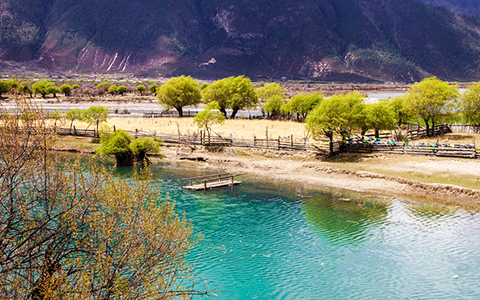
Lhasa River.
Planning Your Visit: A Practical Guide
Planning Your Visit: A Practical Guide to the Lhasa River
Exploring the Lhasa River is an enchanting way to immerse yourself in the rich tapestry of Tibetan culture and breathtaking landscapes. This guide aims to equip you with all the essential information you need for a memorable visit to this stunning area.
Best Time to Visit
The ideal time to visit the Lhasa River region is during spring (April to June) and autumn (September to October). During these months, temperatures are mild, and the skies are generally clear, allowing for spectacular views of the surrounding mountains and the river itself. Summer can be warm but is also the peak tourist season, while winter brings cold temperatures and snow, making travel more challenging.
Getting There
Lhasa is the gateway to the Lhasa River and can be accessed by various means:
– By Air: Lhasa Gonggar Airport is the primary airport, connecting Lhasa to major cities in China. Regular flights are available, so check for the best options.
– By Train: The Qinghai-Tibet Railway offers a stunning scenic journey to Lhasa. The train ride is renowned for its views of vast plateaus and snow-capped peaks.
– By Road: For the more adventurous, traveling by road from other parts of Tibet or neighboring regions can provide a unique experience, although it requires careful planning.
Necessary Permits
Before embarking on your journey to Tibet, ensure you have the following:
1. Tibet Travel Permit: Required for all foreign visitors, this permit must be arranged through a travel agency.
2. Additional Permits: If you plan to visit areas beyond Lhasa, such as the Everest base camp or certain border regions, additional permits may be required.
Accommodation
Lhasa offers a range of accommodation options:
– Luxury Hotels: For those seeking comfort, hotels like the St. Regis and the Shangri-La provide upscale amenities and stunning views.
– Mid-range Hotels: Options like the Yak Hotel and the Lhasa Hotel offer comfortable stays without breaking the bank.
– Hostels and Guesthouses: For budget travelers, numerous hostels and guesthouses provide a more intimate experience, often with local charm.
Local Transportation
Getting around Lhasa and the Lhasa River area is relatively easy:
– Public Buses: Affordable and convenient, but may be crowded during peak times.
– Taxis: Readily available and a good option for reaching specific sites.
– Bicycle Rentals: For those who wish to explore at a leisurely pace, renting a bicycle can be a rewarding way to see the area.
Activities Along the Lhasa River
- Nature Walks: The banks of the Lhasa River offer scenic walking paths. Early mornings are particularly beautiful, with mist rising off the water.
- Photography: Capture the picturesque landscapes, especially around sunrise and sunset when the light casts a magical glow over the river and mountains.
- Cultural Experiences: Engage with local communities, learn about their customs, and perhaps participate in traditional activities.
- Kora Pilgrimages: Join local pilgrims in a Kora around sacred sites near the river, experiencing the spiritual essence of Tibet.
Cuisine
Tibetan cuisine is a highlight of any visit:
– Local Restaurants: Try traditional dishes like momos (dumplings) and thukpa (noodle soup) at local eateries.
– Teahouses: Experience the famous Tibetan Butter Tea or Sweet Tea in one of the many teahouses scattered around Lhasa, where you can also interact with locals.
Cultural Etiquette
Understanding and respecting Tibetan culture is crucial:
– Dress Modestly: While Lhasa is relatively liberal, it’s best to dress conservatively, especially when visiting religious sites.
– Respect Local Customs: Always ask for permission before taking photographs of people, and be mindful of local practices, especially during religious ceremonies.
– Engage Respectfully: Participate in cultural practices like the Kora but do so with respect and an understanding of their significance.
Health and Safety
- Acclimatization: Lhasa is located at a high altitude. Allow a few days to acclimatize to avoid altitude sickness.
- Stay Hydrated: Drink plenty of water, and avoid alcohol until you are well-adjusted to the altitude.
- Travel Insurance: Ensure you have travel insurance that covers health issues and emergencies.
Final Thoughts
Visiting the Lhasa River is more than just a trip; it’s an opportunity to connect with the spiritual heart of Tibet, surrounded by some of the most breathtaking landscapes in the world. With proper planning and an open heart, your journey will be filled with unforgettable experiences. Enjoy your adventure!

Lhasa River.
Tickets: Prices, Booking, and Tips
When planning your visit to the Lhasa River and the surrounding attractions, it’s essential to consider the ticketing aspects of your journey. Here’s a concise guide to help you navigate through ticket prices, booking procedures, and some handy tips for an unforgettable experience.
Ticket Prices
While the Lhasa River itself doesn’t have a dedicated entry fee, many nearby attractions and experiences will require tickets. Here are some estimated prices for popular sites:
- Potala Palace: Approximately ¥200 (around $30) per person. Tickets are limited and must be booked in advance, especially during peak tourist seasons.
- Jokhang Temple: Entry is approximately ¥85 (around $12.50). This is a must-visit for anyone wanting to immerse themselves in Tibetan culture and spirituality.
- Sera Monastery: Entrance fee is about ¥50 (around $7). Don’t miss the monk debates, which usually occur in the afternoon.
- Ganden Monastery: Entry is free, but there may be charges for guided tours or special events.
For trips to Yamdrok Lake and Namtso Lake, costs will vary based on whether you opt for a guided tour or a self-drive experience. Tours typically range from ¥500 to ¥1,500 ($75 to $225) depending on inclusions like meals and transportation.
Booking Procedures
-
Advance Booking: It’s highly advisable to book tickets for popular attractions like the Potala Palace online or through a reputable travel agency to avoid disappointment, especially during the high season (April to October).
-
Tour Packages: Many travelers choose to book comprehensive tour packages that include transportation, entry fees, and guided tours. This can simplify logistics and ensure you don’t miss key experiences. Prices for these packages vary widely, starting from around $900 for multi-day tours.
-
Local Agents: Once in Lhasa, you can also find local travel agencies that offer last-minute deals. However, be cautious and ensure they are reputable.
-
Permits: Remember that foreign travelers need a Tibet Travel Permit to enter Tibet. This can be arranged through travel agencies and usually takes about 10-14 days to process.
Tips for a Smooth Experience
-
Plan Ahead: Due to the limited number of tickets for places like Potala Palace, planning your itinerary in advance can save you time and hassle.
-
Stay Hydrated: The high altitude of Lhasa can lead to dehydration. Carry water with you, especially when visiting remote areas like Namtso Lake.
-
Dress in Layers: Weather can change rapidly in Lhasa. Dressing in layers will keep you comfortable throughout the day.
-
Cultural Respect: When visiting temples and monasteries, be respectful of local customs. Photography may be restricted in certain areas, so always check before snapping pictures.
-
Explore Off-Peak: If possible, visit popular sites early in the morning or late in the afternoon to avoid crowds and enjoy a more intimate experience.
By keeping these ticketing details and tips in mind, your journey along the enchanting Lhasa River and its mesmerizing surroundings will be as seamless and enjoyable as possible. Happy travels!
How to Get There: A Complete Transportation Guide
Traveling to the Lhasa River, nestled in the heart of Tibet, presents a unique opportunity for international travelers to explore one of the most stunning landscapes on the planet. Getting there involves a series of steps, from securing the necessary permits to navigating the local transportation options. Here’s everything you need to know to plan your journey effectively.
Step 1: Obtain Your Tibet Travel Permit
Before you can set foot in Tibet, you must obtain a Tibet Travel Permit, which is essential for all foreign visitors. This permit can only be acquired through a registered travel agency in Tibet. Ensure that you book your trip in advance, as processing times can vary. It’s crucial to have your permit in hand before you arrive in China, as you’ll be required to present it upon arrival in Tibet.
Step 2: Arrival in China
Most international travelers will arrive in China via major cities such as Beijing, Shanghai, or Chengdu. From these hubs, you have several options to reach Lhasa.
By Air
The most convenient way to reach Lhasa is by air. The Lhasa Gonggar Airport (LXA) is well-connected to several major cities. Airlines like Air China, China Eastern, and Sichuan Airlines operate regular flights to Lhasa. The flight from Chengdu to Lhasa takes about 2.5 hours, and from there, you can easily arrange ground transportation to the Lhasa River area.
By Train
For those who prefer a scenic route, taking the train to Lhasa is a spectacular option. The Qinghai-Tibet Railway, renowned as one of the highest railway lines in the world, connects several cities to Lhasa. The train journey from Chengdu to Lhasa takes approximately 36 hours but offers breathtaking views of the Tibetan plateau. Reservations are highly recommended due to limited seating.
Step 3: Getting Around Lhasa
Once you arrive in Lhasa, you’ll find that the city is relatively small and easy to navigate. Here are your transportation options:
Taxis
Taxis are readily available in Lhasa and are a convenient way to get around. Ensure that the driver uses the meter, or agree on a fare before starting your journey, especially for longer trips.
Public Buses
Lhasa’s public bus system is an economical way to travel. Buses run frequently and cover most of the popular tourist areas, including the Lhasa River. However, be prepared for possible language barriers, as not all drivers speak English.
Bicycles and Walking
Lhasa is also a bike-friendly city, and renting a bicycle can offer a unique perspective as you explore the surroundings, including the scenic paths along the Lhasa River. Walking is another excellent way to immerse yourself in the city’s vibrant culture and beautiful architecture, especially around the historic Barkhor Street and Jokhang Temple.
Step 4: Exploring the Lhasa River
The Lhasa River flows peacefully through the city, offering a serene backdrop for your travels. To get to the river, simply head towards the riverbank area, which is easily accessible from the city center. You can enjoy leisurely walks along the banks, take photographs, or just relax and soak in the beautiful Tibetan landscape.
Final Tips
- Acclimatization: Keep in mind that Lhasa is situated at an altitude of approximately 3,650 meters (11,975 feet) above sea level. It’s advisable to take it easy for the first couple of days to acclimatize to the altitude.
- Cash: While many places accept credit cards, it’s a good idea to carry some cash, especially when visiting smaller shops or markets.
- Cultural Sensitivity: Be respectful of local customs and traditions, especially when visiting religious sites.
By following these steps, you’ll be well on your way to enjoying the breathtaking views of the Lhasa River and experiencing the rich culture of Tibet. Safe travels!
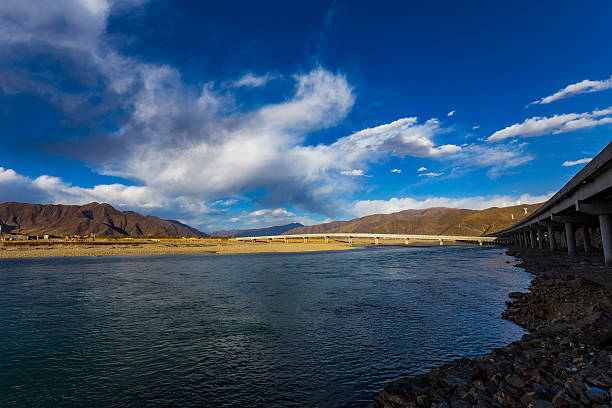
Lhasa River.
Local Cuisine and Accommodation Nearby
As you explore the beautiful Lhasa River and its surroundings, indulging in the local cuisine and finding the perfect place to stay can greatly enhance your experience. Here are some recommendations for delightful dining and comfortable accommodations in the area.
Culinary Delights Near Lhasa River
Barkhor Street Teahouses
No visit to Lhasa is complete without sipping a warm cup of Tibetan Sweet Tea at one of the many teahouses lining Barkhor Street. This beloved beverage, made from boiled milk, sugar, and brick tea, is often referred to as the “blood of Lhasa.” It provides a wonderful opportunity to engage with locals and soak in the vibrant atmosphere of the street.
Dunya Restaurant
For a diverse dining experience, head to Dunya Restaurant, where you can savor traditional Tibetan dishes alongside international cuisine. The ambiance is inviting, making it a great spot for a relaxed meal after a day of exploration.
Makye Ame
Another excellent choice for authentic Tibetan fare is Makye Ame, famous for its warm atmosphere and delicious momos (dumplings). The restaurant’s unique decor and friendly staff make it a favorite among travelers looking to enjoy traditional dishes in a cozy setting.
Hard Yak Cafe
If you’re in the mood for Western food, visit the Hard Yak Cafe located within the Lhasa Hotel. It’s a great place to unwind and enjoy familiar flavors after sampling the local cuisine. Their menu offers a range of items, from hearty breakfasts to light lunches.
Comfortable Stays Near Lhasa River
Lhasa Hotel
A stone’s throw from the Lhasa River, the Lhasa Hotel provides a comfortable and convenient base for your adventures. With stunning views of the surrounding mountains and easy access to local attractions, it’s an ideal choice for travelers. The hotel features modern amenities, an on-site restaurant, and a relaxing atmosphere.
Tibet Minzu Hotel
Located not far from the river, Tibet Minzu Hotel offers a blend of traditional Tibetan décor and modern comforts. This hotel is known for its friendly staff and personalized service, ensuring a memorable stay. It’s also conveniently located near public transportation, making it easy to explore the city.
Barkhor Inn
For those who want to immerse themselves in the heart of Lhasa, Barkhor Inn is an excellent option. Nestled within the historic Barkhor district, this inn allows guests to experience the vibrant energy of the area while providing comfortable accommodations. The rooftop terrace offers panoramic views of the Potala Palace, making it a perfect spot to relax after a day of sightseeing.
By savoring the local flavors and finding a cozy place to rest, your journey along the Lhasa River will undoubtedly be enriched, leaving you with cherished memories of this mesmerizing region.
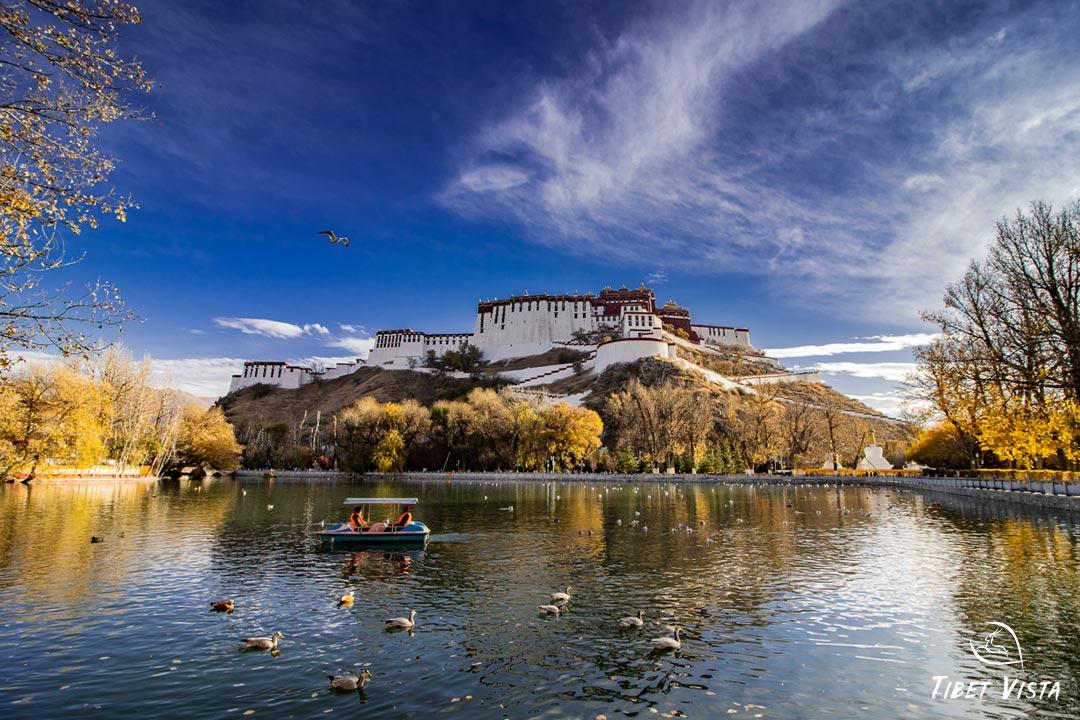
Lhasa River.
Frequently Asked Questions
Frequently Asked Questions About the Lhasa River
-
What is the best time to visit the Lhasa River?
The best time to visit the Lhasa River is during the spring and autumn months (April to June and September to October). The weather is generally mild and pleasant, making it ideal for outdoor activities and sightseeing along the riverbanks. -
How can I get to the Lhasa River from the city center?
The Lhasa River is easily accessible from downtown Lhasa. You can take a taxi or a local bus, which will take you to various points along the river. Walking or cycling is also a popular option for those who prefer to explore at a leisurely pace. -
Are there any guided tours available along the Lhasa River?
Yes, several local tour operators offer guided tours that include walks along the Lhasa River. These tours often provide insights into the river’s cultural significance and surrounding landscapes, making for an enriching experience. -
What activities can I do at the Lhasa River?
Visitors can enjoy a variety of activities at the Lhasa River, including leisurely walks or bike rides along the riverbanks, picnicking with stunning views, birdwatching, and photography. The serene environment also offers a great spot for meditation and reflection. -
Is it safe to walk along the Lhasa River?
Yes, it is generally safe to walk along the Lhasa River. The pathways are well-maintained, and the area is frequented by both locals and tourists. However, as with any travel destination, it’s advisable to stay aware of your surroundings and follow local guidelines. -
Can I find accommodation near the Lhasa River?
There are several accommodation options near the Lhasa River, ranging from budget hostels to mid-range hotels. Staying near the river offers a tranquil environment and easy access to beautiful views and outdoor activities. -
What should I pack for a visit to the Lhasa River?
It’s best to pack layers of clothing, as temperatures can vary throughout the day. Don’t forget essentials such as sunscreen, a hat, comfortable walking shoes, a reusable water bottle, and a camera to capture the stunning scenery! -
Are there any local foods to try near the Lhasa River?
Yes! While exploring the area around the Lhasa River, be sure to sample local Tibetan cuisine. Look for nearby teahouses and restaurants offering traditional dishes, such as momos (dumplings), thukpa (noodle soup), and Tibetan sweet tea to complete your experience.
Final Thoughts on Your Trip
As your adventure along the Lhasa River comes to a close, take a moment to reflect on the myriad experiences that this enchanting region has gifted you. From the serene beauty of Yamdrok and Namtso Lakes to the vibrant energy of Barkhor Street, every corner of Lhasa offers a unique insight into the rich tapestry of Tibetan culture and spirituality.
Climbing the majestic Potala Palace and wandering through the sacred Jokhang Temple are not just physical journeys; they are also spiritual ones, inviting you to connect with a heritage that has thrived for centuries. Whether you found joy in the fervent Kora, tasted the comforting flavors of traditional Tibetan cuisine, or witnessed the lively monk debates at Sera Monastery, Lhasa has undoubtedly left an indelible mark on your heart.
As you prepare to leave this extraordinary land, carry with you the stories of its people, the tranquility of its landscapes, and the wisdom of its traditions. The spirit of Tibet will continue to resonate in your memories, inspiring you to share the beauty of this unique destination with others. Safe travels, and may your journeys ahead be as transformative and memorable as your time along the Lhasa River.